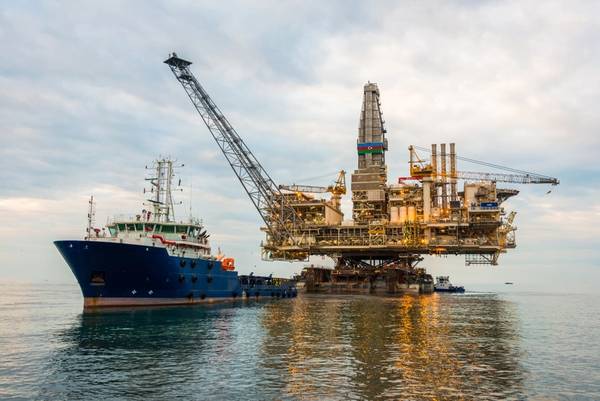
Azerbaijan's national oil company SOCAR has signed a cooperation agreement with energy services firm Technip Energies for a floating wind pilot project.
SOCAR said the two firms would study sustainability measures in the offshore upstream activities, including CO2 emission reduction, improvement of power efficiency, and associated optimization in the total cost of ownership.
"The cooperation agreement includes evaluation of a joint pilot project for offshore energy production on a floating wind turbine. The pilot project envisages energy supply for upstream operations in the Caspian Sea. This would be the first case of offshore wind energy production in Azerbaijan," SOCAR said.
Currently, upstream oil and gas operations in the Caspian Sea mainly use electricity generated from natural gas.
"Among the main objectives of the pilot project is to determine the prospects for the supply of sustainable energy to the upstream sector of Azerbaijan, reduce natural gas consumption and increase gas exports," SOCAR said.
The concept of powering offshore oil facilities using floating wind turbines has been around for some time, however, given that the floating wind industry itself is in its infancy, with a few operating units worldwide, the floating-wind-power-to-oil-platform projects have yet to materialize.
Norway's Equinor seems to be the closest to the realization of such plans with its Hywind Tampen project. Hywind Tampen Illustration - Credit: Equinor
Hywind Tampen Illustration - Credit: Equinor
The 88 MW Hywind Tampen, which will be the world's largest floating wind farm once built, will serve as the power source for five of Equinor's offshore oil and gas platforms in Norway, Snorre A, and B, and Gullfaks A, B, and C.
Norway approved Equinor's 4.8 billion Norwegian crowns ($466 million) plan to build the Hywind Tampen project back in April 2020.
The eleven 8 MW floating turbines will be able to meet about 35 percent of the annual power demand of the five platforms.
Also, Norway's Odfjell Oceanwind is working to develop floating wind turbines to be used to decarbonize offshore oil and gas operations. First units are expected to be operational in 2024. Odfjell Oceanwind will operate as a “shipowner” and will provide its floating wind turbines on a rental basis.
In the UK, Cerulean Winds has recently proposed integrated 200-turbine floating wind and hydrogen development off the coast of Scotland.
The company has filed plans to develop a $14 billion, 3GW floating wind turbine projects at sites West of Shetland and in the Central North Sea, feeding power to the offshore oil and gas platforms and excess 1.5 GWh power to onshore green hydrogen plants.
According to Cerulean, its project, if approved and built, would be able to electrify the majority of current UKCS assets as well as future production potential from 2024 to reduce emissions well ahead of abatement targets.